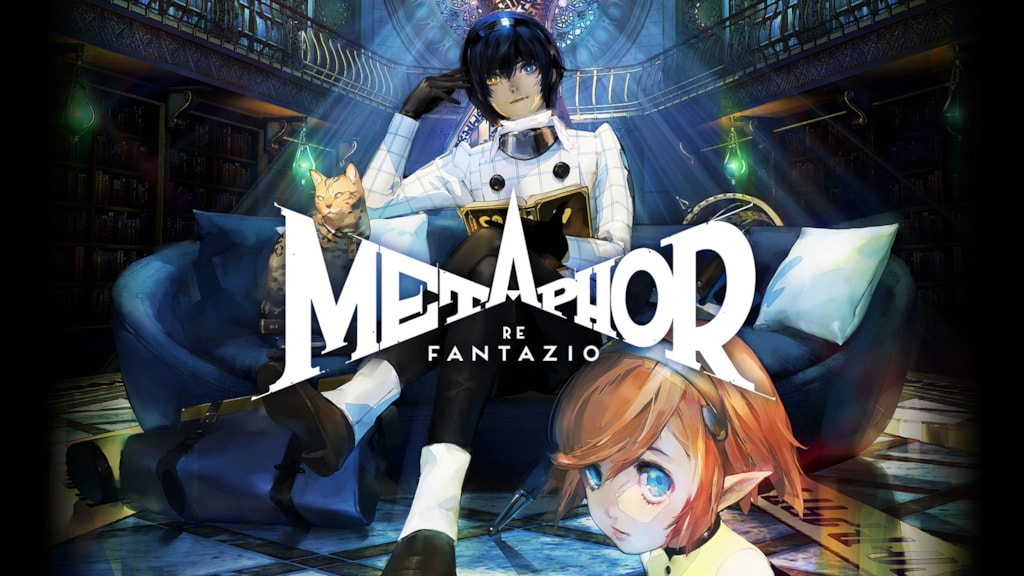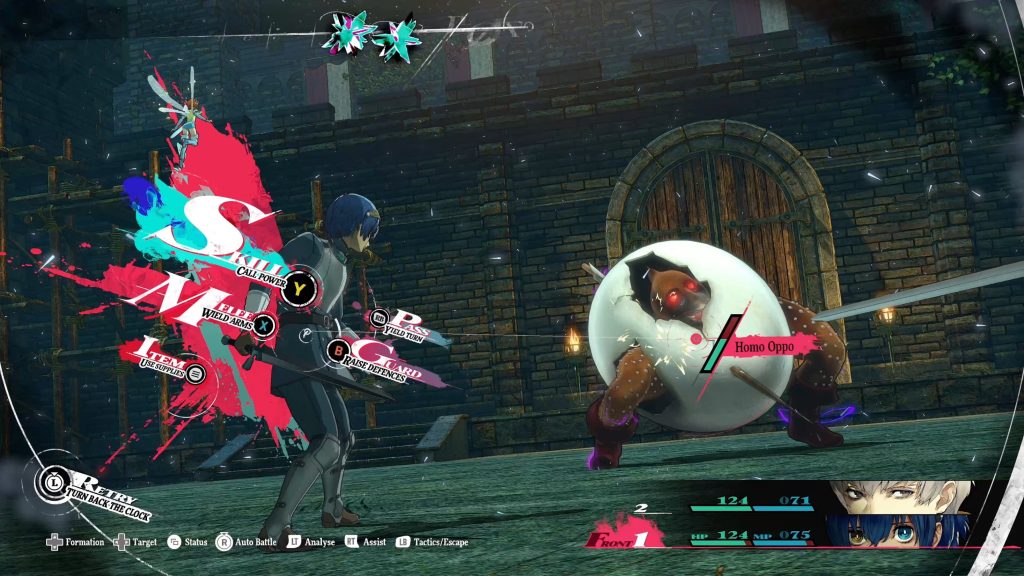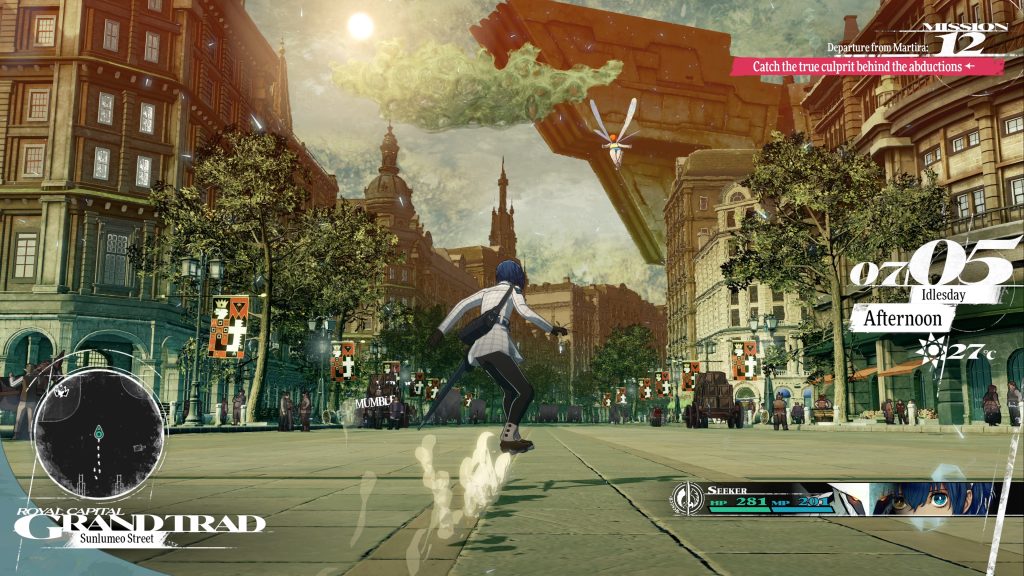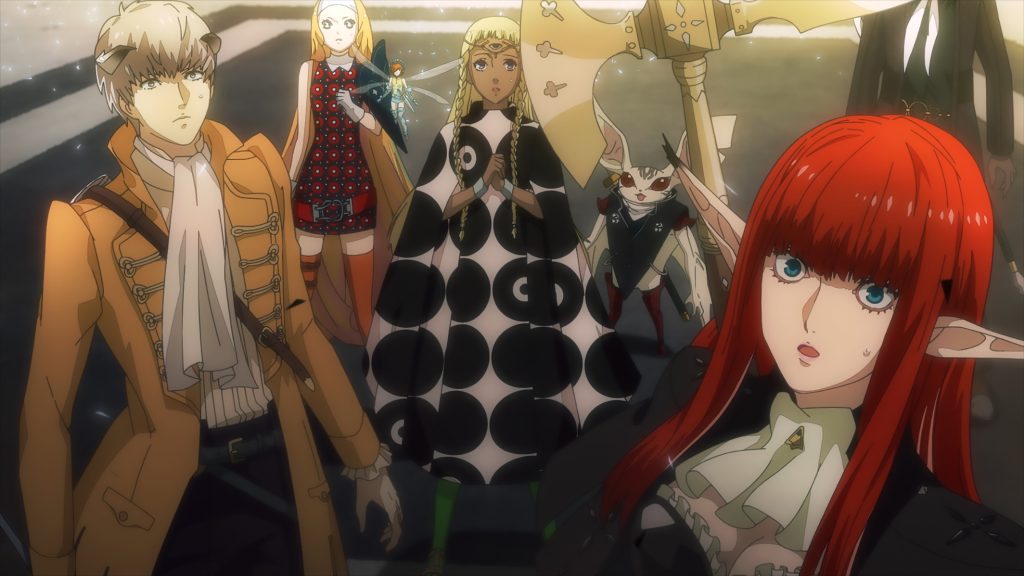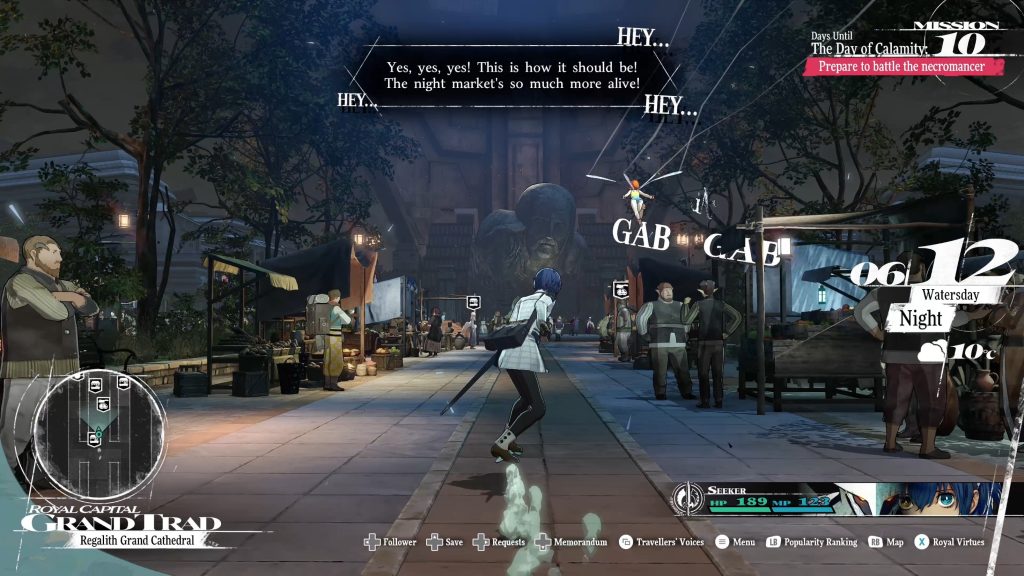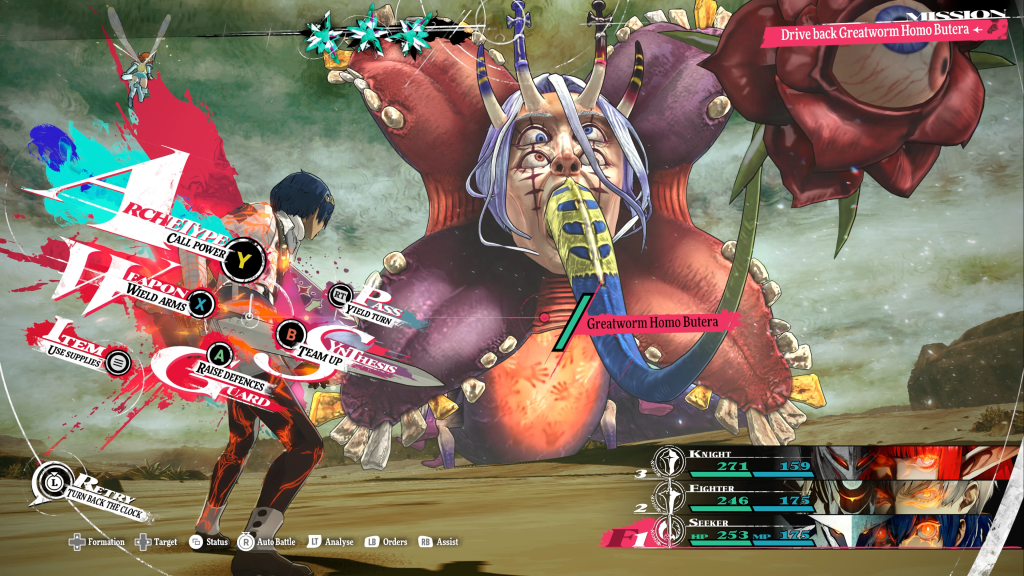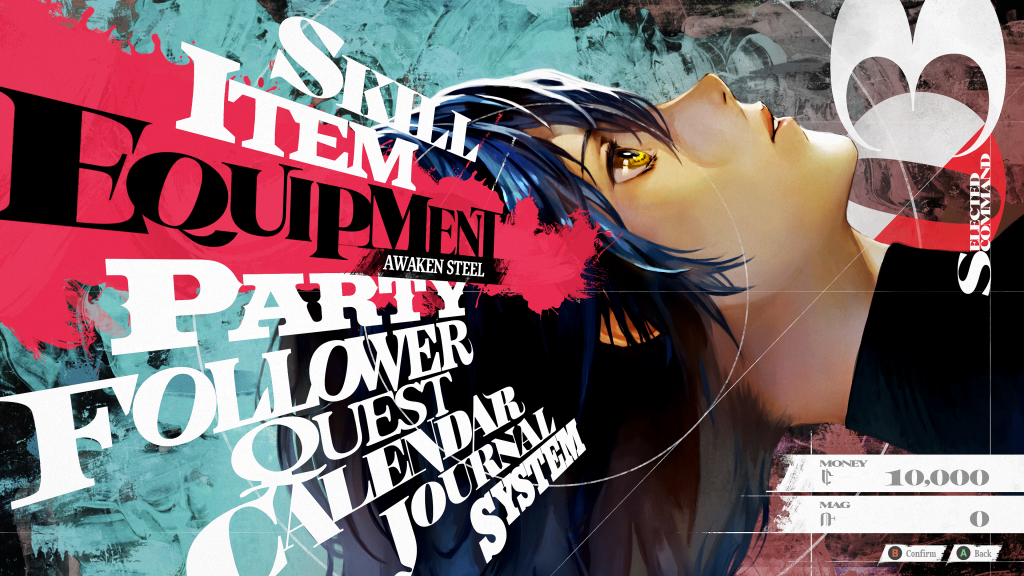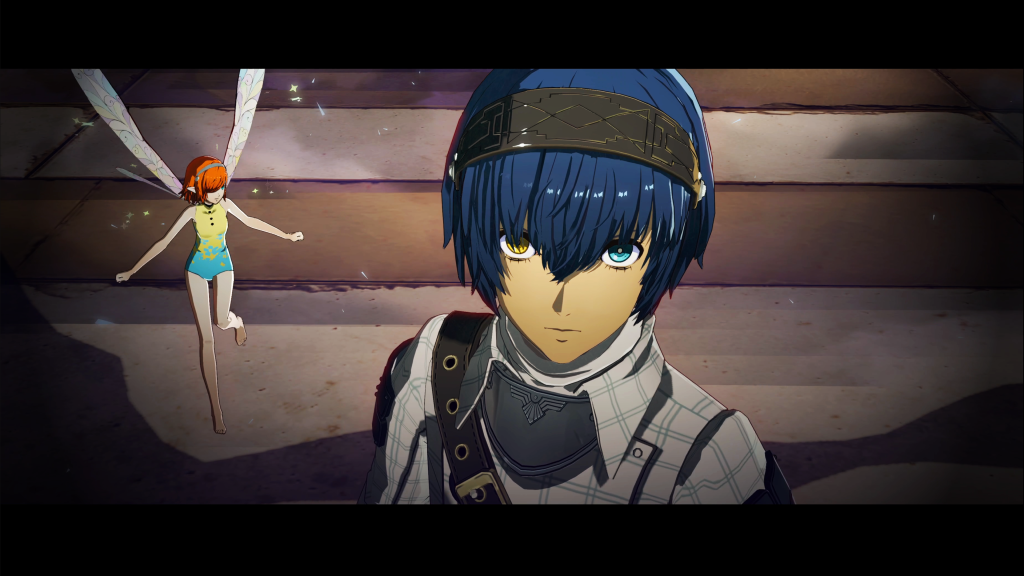Metaphor: ReFantazio is a brand-new IP from Studio Zero, the team behind the beloved Persona series. Taking place in a world of medieval fantasy rather than a stylised Japanese high school, Metaphor builds upon the Persona formula, confidently making it its own.
The story follows the adventures of the player-named protagonist (referred to as Captain in this review) and his fairy companion Gallica. They’ve been given a secret mission involving a missing prince, and a charismatic would-be usurper named Louis.
As anyone familiar with the Persona games might expect, the story of Metaphor goes to some truly wild places, and took me a solid 70 hours to reach credits. Along the way you’ll visit bustling towns, recruit wonderfully realised characters, conquer dungeons and slay unsettling monsters in deep and engaging turn-based combat.
The writing is phenomenal. Characters are fully fleshed out, with their own histories, motivations and quirks. Their interactions with the Captain and each other are delightful, and slowly learning more about them over the course of the game was an absolute joy.
The performances are top-notch too, perhaps some of the best voice acting I’ve experienced in a game like this, just superb stuff. Metaphor tackles some pretty complex themes – the main story alone grapples with prejudice, politics, religion, class warfare and colonialism – and the whole cast rise to the challenge with ease.
Metaphor follows a calendar system, with each day being broken up into sections (morning/afternoon/evening etc). The player has some freedom in choosing what to do each day, with looming deadlines tied to the main story being a constant presence.
Completing an activity in the afternoon, like spending time with a friend, reading a book, cooking a meal, or planting seeds, will cause time to pass and night to fall. You can then spend time on another activity before going to bed, and a new day begins.
All of this is just as satisfying and fun as it is in the Persona games, although there are a number of differences in Metaphor. For one, increasing the rank of your bond with a companion is determined by events of the story, and occasionally certain non-combat attributes (like wisdom, courage, or imagination), rather than requiring you to pick the correct dialogue choice.
This takes a lot of the pressure off. Earlier this year, I played Persona 3 Reload, and I ended up following a day-by-day guide to ensure I didn’t do the wrong thing and lock myself out of a side quest. Additionally, the boons you get by ranking up a follower in Metaphor are legitimately useful, making the whole system feel far more worthwhile engaging in.
The turn-based combat borrows its fundamentals from Persona. You can field a party of four in any one fight, there are three types of melee attacks, and a slew of elemental magic attack types. Enemies will be resistant and weak to different attacks, so picking which abilities to use when is.
Where Metaphor’s combat system gets interesting is with Archetypes. In-world, these are essentially fantasy exosuits that symbolise the virtues of ancient heroes and are bestowed upon folk worthy of upholding said virtues. In terms of actual gameplay, they work like classes or jobs.
Having the Captain or one of his crew “study” a particular Archetype gives them the abilities of that Archetype. When choosing a new one, you can carry over a limited number of abilities from other Archetypes. This allows for a lot of customisation, and finding the right synergy between Archetypes and the party member utilising them is key.
This system was a little daunting at first; I was concerned about potentially levelling up the wrong Archetypes with the wrong characters. Over time, however, it became a lot of fun to get absolutely demolished by a boss, and then after a bit of tweaking go back for round two with a far more effective party.
When dungeon-crawling, you can attack in real-time like an action game. Depending on your target’s level, this will do one of two things. For foes around your level, you can attack to stun them before entering turn-based combat, gaining an advantage and starting the fight off with your enemy stunned.
For enemies significantly below your level, you can take them out without ever entering into proper combat at all. It was extremely gratifying to go into a dungeon that I had inadvertently over-levelled for, wiping out most of the monsters inside like I was playing Bayonetta on easy.
The world of Metaphor is vast, and as the Captain you will travel across the Kingdom of Euchronia in a Gauntlet Runner, a sort of steampunk land ship. Travelling like this has been integrated into the calendar system, meaning you really need to plan out your expeditions. What foes might you encounter along the way? What is the weather predicted to be upon your day of arrival? Do you have enough time to get there and back before the next big story moment?
All of this is a fantastic expansion upon the tried and true Persona formula. It breaks up the pacing wonderfully; after a long stretch of time spent in a city, buying new weapons and armour, helping out friends, and progressing the story, you then get to go out and explore the world, delve into a dungeon and see the sights of the kingdom.
In past Studio Zero games, dungeons have often been a point of contention for players. Earlier Persona games had dungeons made up of seemingly random, and repetitive, corridors. Persona 5 changed this up, making dungeons actual hand-crafted locations with clear ties to specific characters.
In Metaphor, it’s a bit of both. Dungeons tied to side quests tend to be one of a few types: caves, ruined temples, or forests. They’re designed in such a way that they remain compelling to explore, but are pretty indistinguishable visually.
The main story dungeons, however, are a real treat. They’re far more grounded in the world and narrative than anything I’ve seen in a Persona game. From breaking into a castle haunted by a horrific sewer-dwelling monster, to sneaking aboard an enormous, fully-garrisoned airship, the story dungeons feature unique gameplay mechanics and pivotal plot beats to really set them apart.
Graphically, Metaphor is a bit of a mixed bag. The art direction is absurdly strong. Character art, both their in-game models and the portraits that appear during dialogue scenes, are gorgeous. Enemy design is the same, with certain bosses appearing to have come straight out of a Hieronymus Bosch painting.
The actual image quality and overall fidelity is surprisingly low, however. Textures, environments and the overall level of detail are rough, to say the least. The severe aliasing is another particularly noticeable flaw. It’s not clear what exactly happened here, as I feel both this year’s Persona 3 Reload and even 2017’s Persona 5, had better image quality.
It’s not enough to ruin the experience, by any means. A lot of your time in this game is spent watching cutscenes or reading dialogue, and so having the world look like Horizon: Forbidden West is not a necessity. Still, it would’ve been nice if the wonderful art wasn’t sometimes brought down by poor image quality.
Ultimately, Metaphor: ReFantazio is a fantastic evolution, both of the Persona formula, and the genre at large. Stunning art direction, deep and rewarding combat, wonderful characters and sublime voice acting make for an absolutely unmissable RPG, in a year already chock-full of unmissable RPGs.
Rating 9.5/10
Metaphor: ReFantazio was reviewed on PS5 with a code provided by the publisher.

